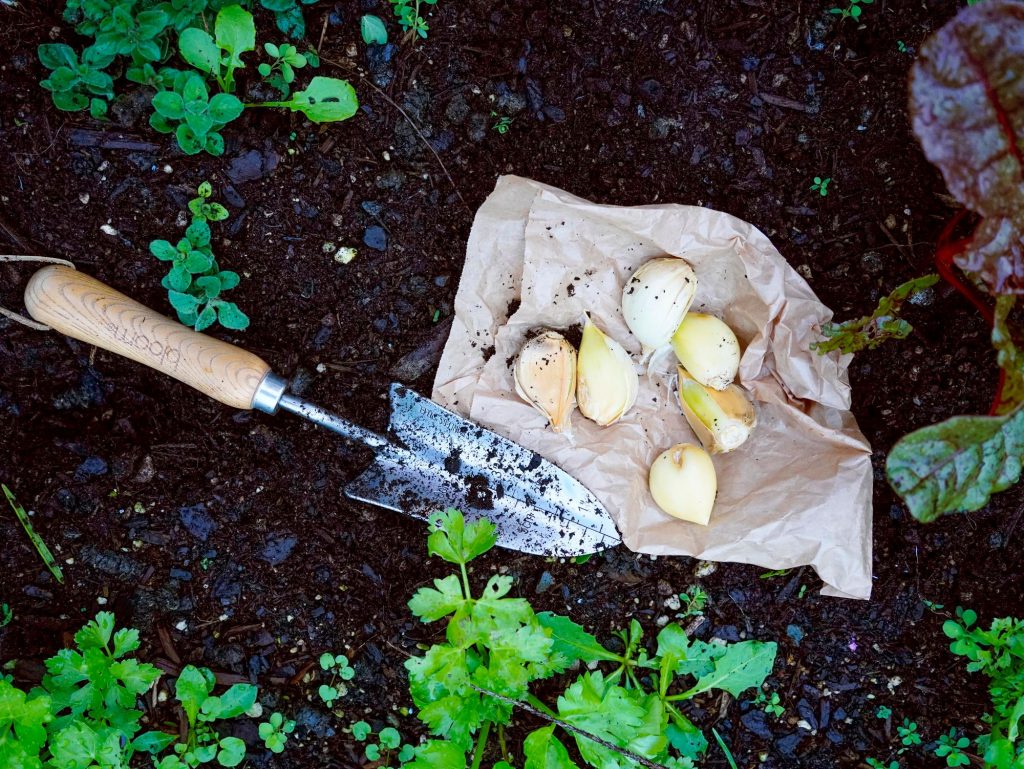Put on your winter woollies and grab your tools – these five activities will get you out into the garden during the colder months.
I always find that summoning the energy to get out into the garden in winter is a bit like motivating myself to exercise. Once I’ve put on my designated winter gardening jersey and I’m out there planting or weeding, I never regret it. It’s rejuvenating. And when I return indoors with rosy cheeks and dirt underneath my fingernails, I feel I’ve earned the right to binge-watch my latest favourite TV show. So, if you’re ready to get amongst the wet and the cold here a1re some jobs you can do right now.
1 Boost your flower intake
If you’re not venturing outside much, pick yourself a pretty posy of whatever blooms
you do have and bring them inside to admire. Or, if you’re suffering from a flower deficiency, get yourself some potted colour at the garden centre – they usually have “five for $10” deals where you can choose delights such as pansies, snapdragons, polyanthus, calendula and fuzzy grey lamb’s ears. Pot them up and put them on your steps or porch, where their pretty faces will greet you on a cold winter’s day.
2 Sow broad beans
I’m unscientifically convinced that these beans grow well in winter because they come zipped up in their own fur-lined jackets. They’re easy to grow and if you sow them now, they’ll be ready to harvest in early spring. Sow seeds direct at a depth of 4cm and about 15cm apart (if you live in a cold region, plant a punnet of seedlings instead). They need support as they grow, so rig up a structure with bamboo stakes and string. Keep them well watered, particularly once they produce their pretty black-and-white flowers – or go for the beautiful crimson-flowering varieties. Winter is also a good time to plant punnets of celery, silverbeet, cabbages, kale and cauliflower.

3 Grow rhubarb
There was a time when almost every Kiwi garden had its own patch of rhubarb – and for me, the taste of rhubarb crumble is like a time machine to my childhood. Unlike most types of fruit, which drop their crop over a few weeks each year, the beauty of rhubarb is that you can harvest the stems all year round. It generally takes around two years before rhubarb is ready to be harvested. However, I buried a frozen kahawai (it was re-gifted from a vegetarian friend) in the hole when I planted my rhubarb, and it grew so vigorously that we were harvesting thick ruby-red stems within a year. A dead fish isn’t essential though – just add loads of manure to the soil before planting.

4 Plant garlic
Traditionally, you plant garlic on the shortest day, which is June 21 this year, because there’s enough winter chill to trigger it into doing its thing. Having said that, you can actually plant garlic as early as April. Purchase garlic bulbs from garden centres (supermarket garlic has often been treated and won’t grow). This year, I’m growing elephant garlic, which is actually a type of leek and has a mild garlic flavour. Garlic should be planted in a sunny spot in well-drained soil enriched with compost and aged manure, such as sheep pellets. Break the garlic up into cloves like you do when cooking with it (don’t peel it), and plant the plumpest cloves, pointy end facing up, around 5cm deep and 15cm apart. Green shoots will emerge in three to four weeks, while below the soil, the individual cloves are slowly developing into bulbs.

Unless it’s a very dry winter, you only need to water your crop sparingly. If your soil is too boggy, the bulbs will rot, so if that’s unavoidable or you don’t have a big garden, you can plant garlic in a 10L bucket or large pot. Feed your crop with liquid fertiliser every few weeks in early spring. Once the tips of the leaves turn yellow – in around December or January – your crop is ready to harvest.
5 Plant or move a rose
Roses are dormant right now, so it’s a good time to get them established before they get into full leaf and flower production in spring and summer. It’s also the right time to move roses that have never quite hit their stride – maybe they’re in a spot that’s not sunny enough because other trees or shrubs are shading them. Choose a sheltered spot that gets at least five hours of sunlight. Dig a hole that’s twice the depth and width of the plant’s root ball. Add compost to the hole, then plant the rose at the depth it was in the pot or ground and backfill with soil.








